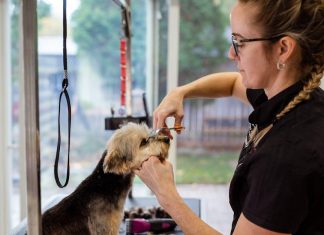Teaching your puppy to fetch is more than just a playful activity—it’s a delightful way to bond with your furry friend while providing them with essential mental and physical stimulation. As you embark on this journey, patience and enthusiasm will be your greatest allies, helping your puppy learn this classic game with joy and ease. In this guide, we’ll walk you through the foundational steps of teaching your puppy to fetch, offering tips and techniques to ensure that both you and your pup have a rewarding experience. Whether you’re a seasoned dog owner or a first-time puppy parent, these instructions will help transform fetch into a fun and engaging routine for your little companion.
Choosing the Perfect Fetch Toy for Your Puppy
When it comes to selecting a toy for your puppy, there are several key factors to consider to ensure a safe and enjoyable playtime. Material is a crucial aspect; opt for durable, non-toxic materials that can withstand those sharp puppy teeth. Size matters too—choose a toy that’s easy for your puppy to carry but not small enough to pose a choking hazard. Additionally, consider toys with bright colors or interesting textures to keep your puppy engaged and stimulated.
- Rubber Balls: Perfect for puppies who love to chew, rubber balls are durable and easy to clean.
- Frisbees: Lightweight and aerodynamic, frisbees can be a great way to encourage your puppy to run and jump.
- Rope Toys: These are excellent for puppies who enjoy tug-of-war and can help with dental health.
- Stuffed Animals: Ideal for gentle play, these toys can also provide comfort and companionship.
Remember, every puppy is unique, so it might take a bit of experimentation to find the toy that sparks joy in your furry friend. Regularly inspect toys for signs of wear and tear to keep playtime safe and fun.

Creating a Safe and Fun Fetch Environment
When embarking on the journey of teaching your puppy to fetch, it’s crucial to create an environment that is both safe and engaging. Safety should be your top priority. Start by choosing a location free from potential hazards like sharp objects, busy roads, or other animals. An enclosed yard or a quiet park is ideal. Make sure your puppy is equipped with a comfortable, well-fitting collar and a leash if needed. Inspect the fetch toys for any small parts that could be chewed off and swallowed. Opt for durable, non-toxic toys specifically designed for pets.
In addition to safety, infuse the fetch environment with elements of fun to keep your puppy interested. Use toys that squeak or bounce to capture their attention. Keep sessions short to match their limited attention spans, gradually increasing the time as they grow more enthusiastic. Incorporate variety by switching up toys and playing locations to keep things exciting. Here’s how you can enhance the experience:
- Introduce rewards like treats or praise when they successfully retrieve the toy.
- Engage in playful gestures and encouraging words to maintain their excitement.
- Allow for breaks to prevent fatigue and frustration, ensuring each session ends on a high note.
By prioritizing safety and fun, you’ll create an ideal setting for your puppy to learn and enjoy the game of fetch.
Step-by-Step Guide to Teaching Fetch with Positive Reinforcement
Teaching your puppy to fetch can be a fun and rewarding experience for both of you. To get started, you’ll want to use positive reinforcement to encourage and reward your puppy’s progress. Here’s how to break it down:
- Choose the Right Toy: Start with a toy that your puppy already shows interest in, such as a soft ball or a plush toy. Ensure it’s the right size for your puppy to carry comfortably.
- Introduce the Toy: Play with your puppy using the toy to build excitement. Toss it a short distance and encourage your puppy to chase after it.
- Encourage Retrieval: Once your puppy picks up the toy, use a cheerful tone to call them back to you. You can use a command like “bring it here” or simply their name.
- Reward with Treats: When your puppy returns with the toy, offer a treat or lots of praise. This positive reinforcement helps them associate bringing the toy back with something good.
- Repeat and Practice: Practice this activity regularly, gradually increasing the distance you throw the toy. Remember to keep sessions short and fun to maintain your puppy’s interest.
By following these steps, you’ll create a positive learning environment where your puppy feels motivated to learn and play. Always be patient and celebrate each small success, ensuring your puppy enjoys the game as much as you do.
















